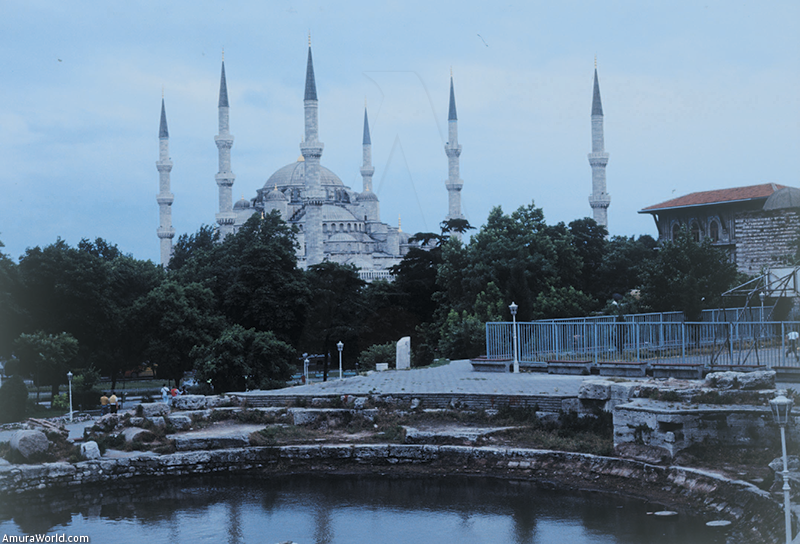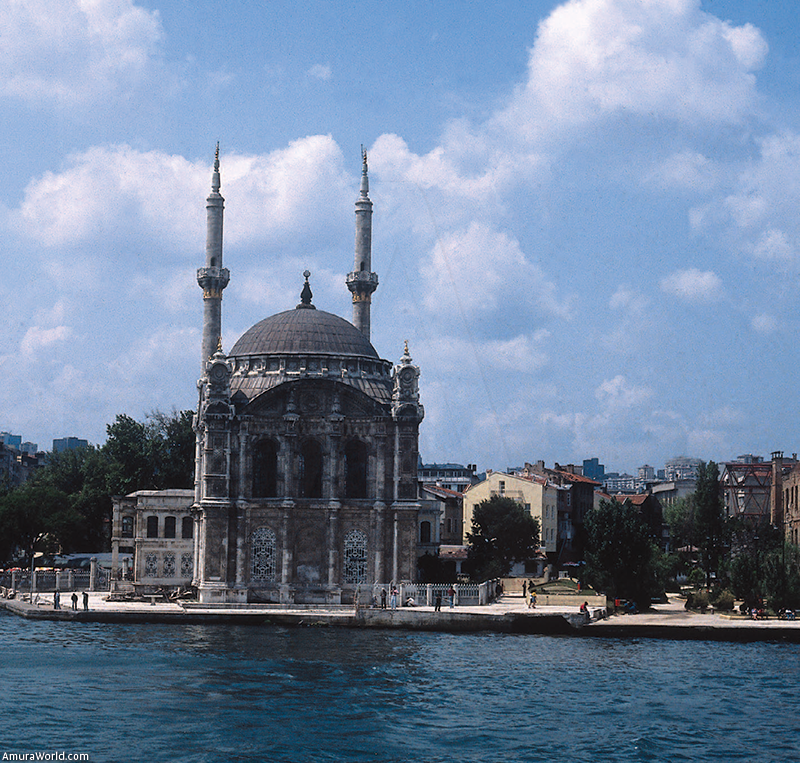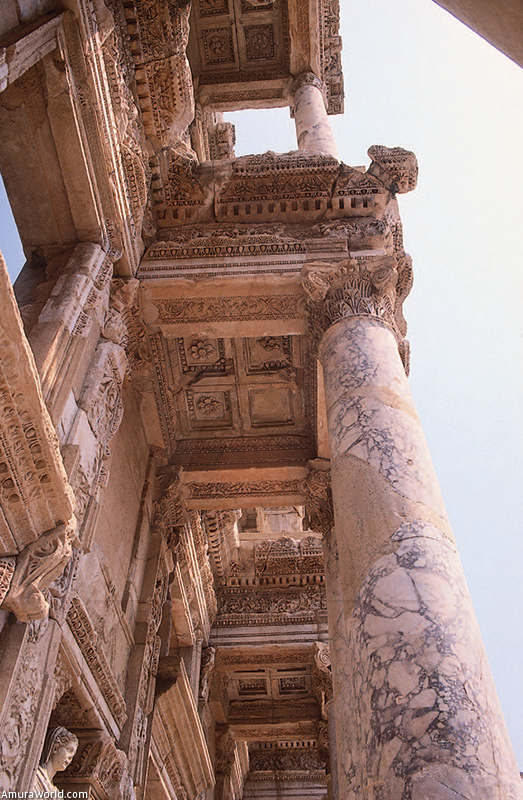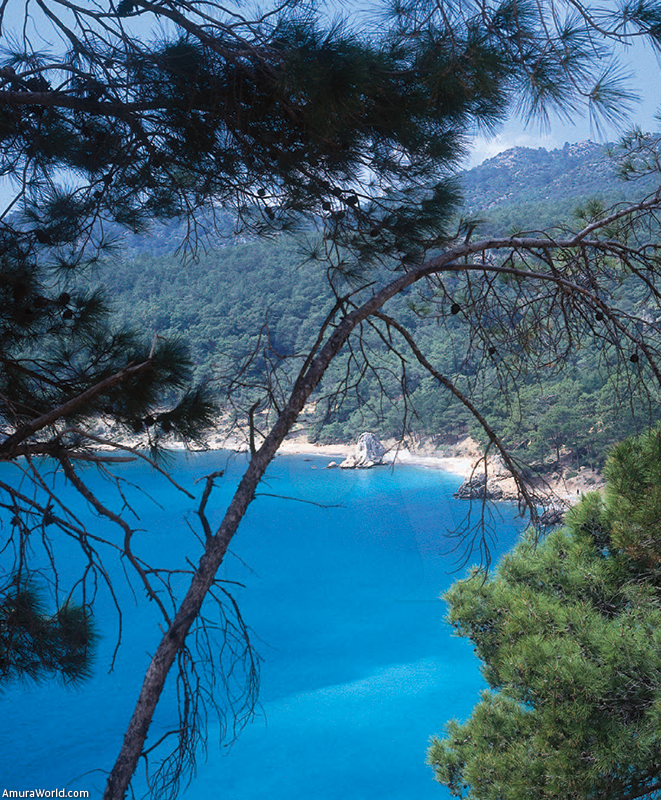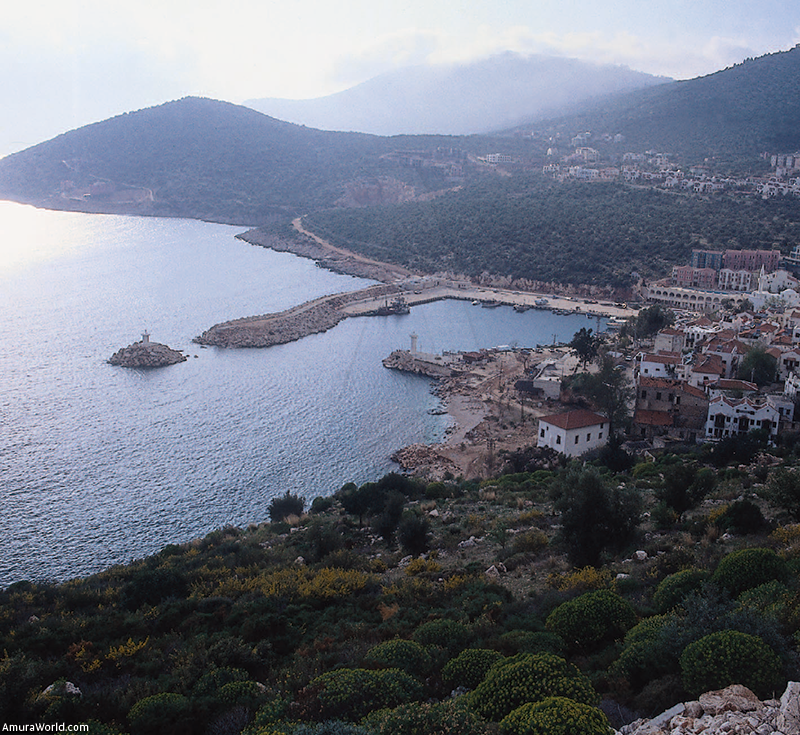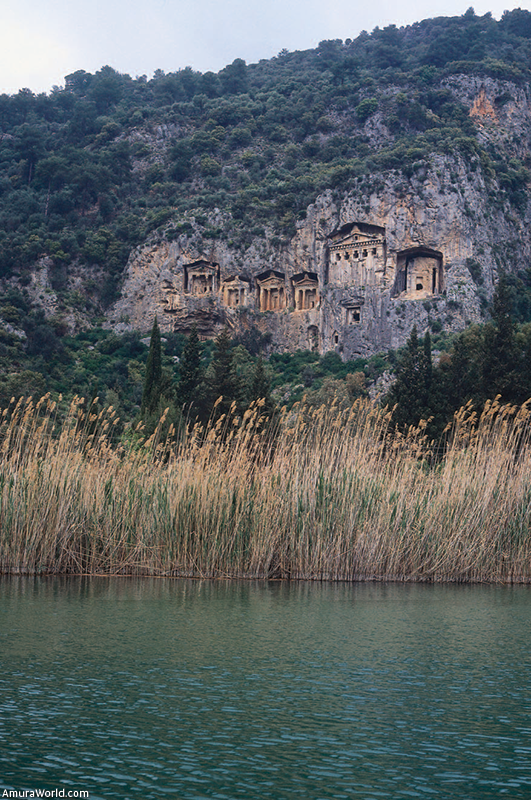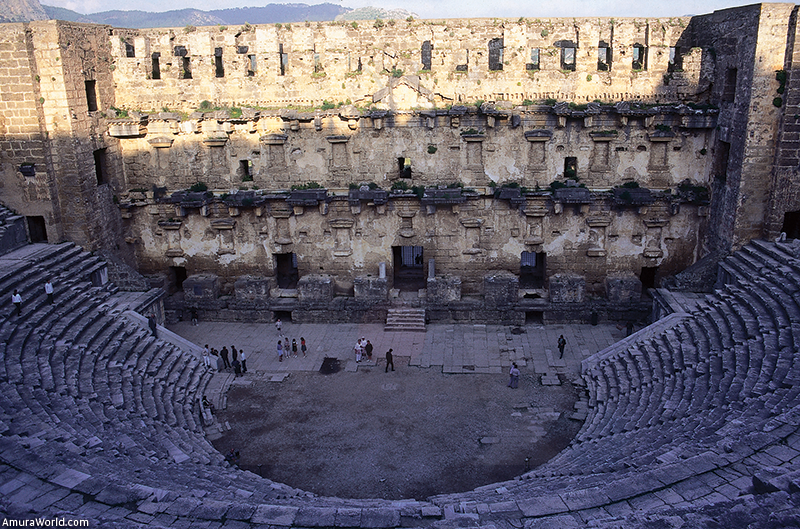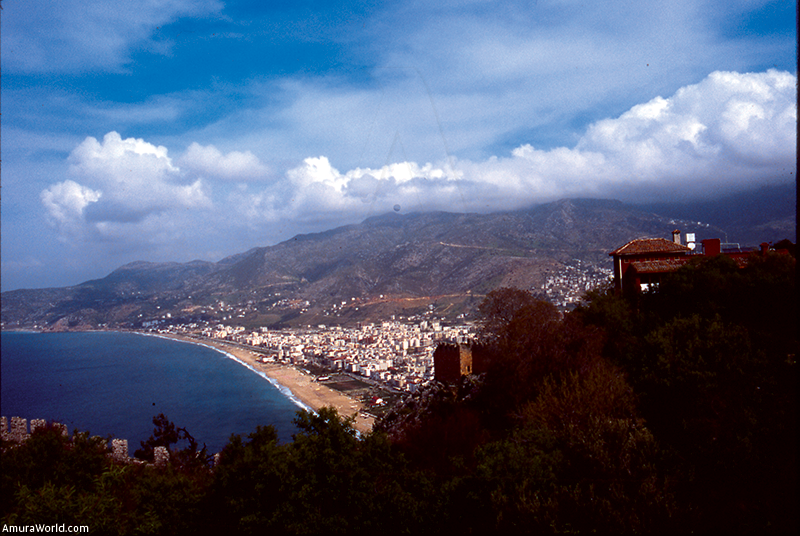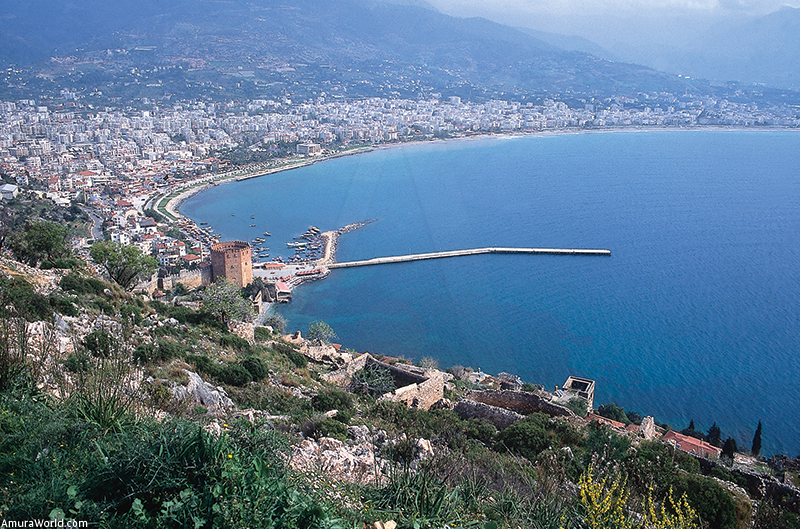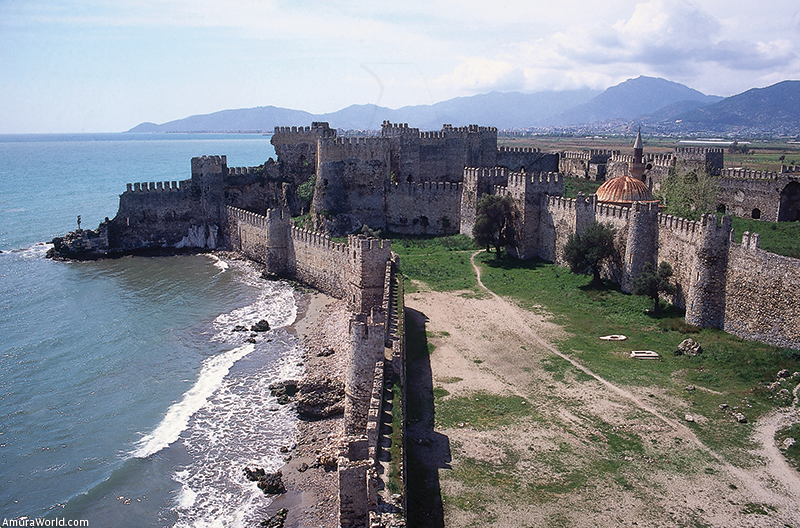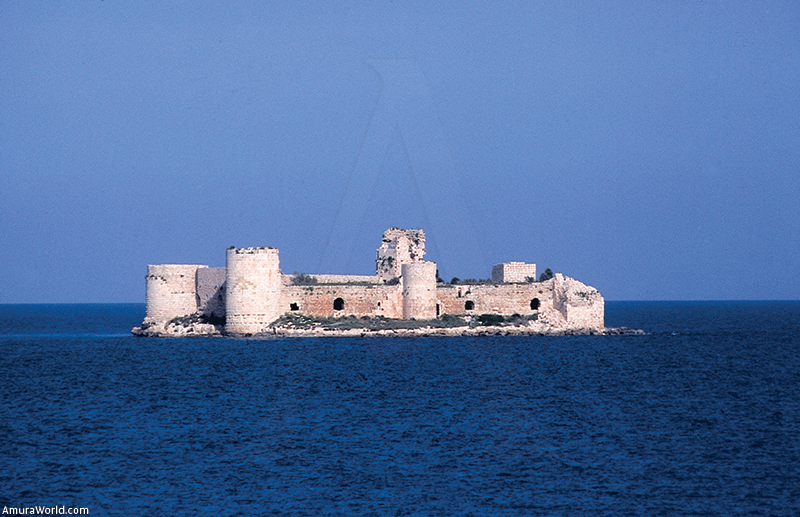Turkey of the four seas
Country of two continents, occidental and exotic. Turkey lives by European time but to the rhythm of the Middle East. It is a nation proud of its culture, a product of so many centuries of wars, conquest, erudition, art and nature. Its affectionate people are pleased to welcome visitors to its many marvelous sights. The seas invite sailors to discover enchanting coves and extraordinary remains that are witnesses to the passing of time. The Turks extend an invitation to all to enjoy the marvelous journey from Istanbul to Tarsus.
Istanbul, the amazing city with a European heart lying at the feet of Asia Minor, is a bustling metropolis that charms and seduces. It has been the muse of poets, the target of conquerors and a paradise for traders. Divided by the Golden Horn and the Bosphorus, Istanbul vibrates to the rhythm of the muezzins chanting in the mosques.
Saint Sophia, the superb Byzantine church that is now a mosque, is a guardian of times gone by. The Valens aqueduct, built by the Romans, is a witness to the era when At Meydani was a hippodrome, long after Alexander the Great passed through these lands on his way to Persia, Egypt and India. The Blue Mosque dominates a hill in one of the oldest parts of the city and the Topkapi Palace, witness to the grandeur of the sultans, their wealth and love of art, guards the Bosphorus. Its museum safeguards fabulous treasures and its beautiful buildings rise from amidst its charming garden.
The Great Bazaar is jam-packed with extraordinary rugs, jewels, leather garments, copper and wood handicrafts: it is as if you were inside a treasure cave lying within its maze-like streets. The city vibrates, beating to the background music that emanates from the ceaselessly moving crowds, beckoning you to lose yourself in the intriguing streets.
Taksim, on the other side of the Golden Horn, is a new city that yearns to be modern although it has a medieval air. It is 200 years old and lies in the shade of the Galata tower, which dates from the 14th century. This is where we set out on our journey, a sail that took us on an exploration of four seas and an amazing country bordered by an exceptional coast.
The view from the Bosphorus is beautiful: there are spectacular palaces, like the Dolmabahce Sarayi (1853) and the Beylerbeyi, as well as the gorgeous summer homes of Istanbul’s wealthy families. It is an extraordinary experience to sail in a place where so much history has taken place, where the waters know that Byzantium, Constantinople and Istanbul are the same city, and greet the Rumeli Hizari fort and the two impressive bridges that unite the continents.
The enchanting towns that border the Bosphorus beckon you to enjoy their serenity and the good seafood restaurants that are located beneath the shade of the trees. We reach the entrance to the Black Sea, the waters that unite the Mediterranean world and its countries of harsh winters, like the Ukraine —that unknown horizon— with its beautiful Turkish coast.
We return by the Bosphorus and, after passing the awesome towers of Istanbul’s mosques, we enter the calm Marmara Sea, a place of dark beaches, green waters, heavy sea traffic and the scene of many 20th century battles.
After a long discussion with the captain, we anchored at Mudanza’s small dock to visit the beautiful, ancient city of Bursa —once the Ottoman capital—, a place of hills covered in cedars and olive trees. Typical and exotic, Bursa beckons you to discover its bazaar, located at the foot of two sumptuous imperial mosques, as well as the narrow streets that communicate the early caravanserai, the place where caravans rested. Bursa’s most important landmarks are the green mosque (Yesil Cami) and the tomb of sultan Celbi Mehmet (Yesil Türbe) with its gorgeous tiles.
The breeze in the Marmara Sea allows for a peaceful sail but you have to use your motor in the Dardanelles because it is very narrow and has a lot of traffic. The view is of low hills, and the strait, an important geographic point, has been the scene of great battles, like Gallipoli, and the path of Alexander the Great. At its entrance are the ruins of mythic, mysterious Troy where, using your imagination, you can relive the story of the famous Trojan horse.
When entering the Aegean Sea, the third body of water of our voyage, the force of the winds surprises us with drastic changes, stunning calms and exquisite breezes. The Aegean is famous for its changes of mood, its many islands and a coast that seems to be traced by the whim of the gods. The scenery is spectacular, ranging from the coast to the island of Lesbos, with its mountains that descend to the sea creating gulfs, bays, coves and beaches with crystalline waters. At the end of this great bay is Izmir or Smirna. Immense, Smirna is well protected, has a great port and marina, a lot of beach lovers, international crowds, shops and an intense night life. It was the ideal place to dock while we visited Bergama, an enchanting town that draws visitors to old Pergamon, a solitary city that was built on a hill. It was a sanctuary of the Hellenistic culture and later of Rome, and its ruins are all that remain of these great societies. Today, you can appreciate the beauty of the Doric columns that were part of its impressive temples, doors, theater, acropolis and the famous library which contained more that 200,000 parchment books. Its streets and the echo of its carriages and horses take us back in time while we admire the temples of Artemis and Zeus.
From Izmir, and taking advantage of the wonderful marina, we visited Ephesus. One of the world’s most important in ancient times, it is one of the best conserved cities, a place that was renowned for its temple of Artemis, built in 560 B.C., and considered one of the seven wonders of the world. For centuries an important city, it received Alexander the Great with great honors and its golden age began with the arrival of the Romans. It was then named a Procurator (provincial government) and the majority of its monuments where built between 30 B.C. and 110 A.D.
A majestic cobblestone avenue, lined with grandiose buildings with columns and fountains, descends to the impressive Celsus library with its two floors adorned with columns. Immersed in this splendid ambiance, your mind drifts and, in the unknown, discovers the images of this city that was once extraordinarily beautiful
Its theater, that still holds 24,000 people, hosts an annual May festival. The gymnasium and baths are in the lower part, near the sea and the port that witnessed the arrival of galleons from which people and merchandise disembarked. However, as time went by, the sea withdrew and the port silted up.
Ephesus was also an important Christian city and it grew with the creation of Selçuk, a Byzantine city. There, we visited the basilica of Saint John, where he is interred, the citadel and aqueduct. In the nearby hills, covered with pines, we found the home where it is believe the Virgin Mary lived during her pilgrimage with Saint John. The small stone house is a magical place, full of symbolism and strong vibes, where many believe they can be cured.
Before returning to our sailboat, we traveled 120 km (14.5 miles) to reach Pamukkale, near Denizli, a spot where calcium-rich water surges from the ground at 35 °C. Here, there are natural pools that adorn the white, terraced hills. It is a natural Spa, visited since ancient times, exceptionally beautiful and very crowded in the summer.
The whole region is an invitation to discover many archeological sites but we returned to Izmir to begin our journey along the coast, going around the peninsula, a place where you will find the best beaches on what is called the Turkish Riviera. Cesme, adorned with a 14th century castle, 15th century caravanserai and Orthodox church, is a great vacation spot with beautiful sand beaches, restaurants, discos, an excellent marina lying in the middle of a jagged coast and numerous islands. Taking advantage of favorable winds, we sailed south, passing Ephesus and the Greek island of Samos, and the most desolate coast of the Güllük gulf, with its uninhabited coves and virgin beaches.
After this fabulous journey we reached Bodrum, a city with two seas. It is an enchanting place, located in the narrow part of the peninsula and dominated by the imposing Saint Peter castle that guards the white city. An old fishing port, it is now a pleasant town with outstanding hotels, exquisite restaurants and all that is necessary for pleasing European tourists, who spend long periods here. The marina is excellent and Bodrum has become a favored spot for the international jet set. It has gorgeous villas nestled on the hillsides, a dock filled with impressive yachts and people strolling at sunset before heading to bars and restaurants (Hadi Gari bar is the most popular) ending the night at the renowned Halicarnassus disco. Bodrum is beauty, entertainment, encounters with the rich and famous, show-offs and a guaranteed good time.
The Gökova gulf, bordered by impressive mountains, is almost completely closed. Limited by the Datça peninsula to the south and Kos island at the entrance, it is a beautiful place that we quickly toured in the sailboat, passing close to the island of Rhodes, exquisite coves that form a peninsula at the foot of mountains covered with pines and the surprising hill sowed with the ruins of Knidos to reach another fun place: Marmaris or Marmara. Known as the “Turkish Marbella”, it is a damned city say the women who live in the mountains, a place of solace say the Germans who spend their vacations here.
It is a white city with red roofs overlooking the limpid blue waters of the gulf that opens out to the Mediterranean, a crowded port with a marvelous marina. Years ago, it was a tiny fishing port but today Marmaris is a small vacation destination protected by its fort, with a privileged climate, beaches, dive spots and nearby archeological ruins. It is the place that divides the Aegean and Mediterranean seas, a world that blends foreigners with Turks, conservative families with flashy people, where you will enjoy the best Turkish ice creams and the party is never-ending.
Because of the changing winds, sailing the Mediterranean is unpredictable. The coast has impressive mountains that seem to plunge into the sea —without allowing for the construction of ports— and beautiful beaches with transparent water before you reach small Dalyan bay. Here we anchor to continue our journey in a small boat through the channels to visit the awesome tombs of the Lyceans, a proud community of ancient sailors. Their graves, located in the cliffs, are being excavated and are part of the gorgeous scenery. In nearby, ancient Caunos there is a theater and wall and it is amazing to see how far the sea has withdrawn. The harbor is now several miles inland, as if it never existed, when we know it was one of the ancient world’s most famous ports.
Finally, we reach beautiful Fetihye bay where we find the city of the same name. Fetihye, capital of the Lyceans, is a charming white town with cliffs and tombs carved out of the rocks… magnificent testimonies to its greatness. Fetihye has an excellent marina and is a popular anchoring spot for the grand yachts that visit the numerous nearby islands and small coves, as well as stunning Sövalye Adasi beach.
Here is where the wild Turkish coast begins, a place whose long beaches, lying between mountains and cliffs, beckon to be explored. Here you will also find the ruins of Letoon and huge Patara beach, where turtles lay their eggs, to finally arrive at Kas, with its striking marina, its wild summer life of discos and restaurants and its beach. It is a marvelous area, an archipelago of small islands and coves and the ruins of Kekova Hadáis, where tombs emerge from the sea. Long Myra beach follows, a place where you will find the church of Saint Nicholas in the middle of orange trees that perfume the entire countryside.
Later, passing pine-clad cliffs, we enter small Olympus bay. Here, we enjoyed the charming vestiges of an ancient city, ruins hidden in a tree-filled valley that has a natural port. A spot guarded by Mount Phoenix, where there is natural gas and a never-ending flame, it is believed to be the home of the Chimera, a demon exterminated by Bellerophon.
Passing Kemer, an area popular with tourists, with its fine marina lying at the foot of mountains blanketed by pines, emerges stunning Antalaya, established in 158 B.C. Located at the end of the gulf, it is an attractive fishing port, a place where you will find yachts anchored amidst the small cliffs and where the city extends with its wall, the minarets of the mosques, the citadel and the ancient Hidirlik Kulesi lighthouse. It is a setting where you find bars, vendors of freshly toasted nuts, of ice creams, charming alleys and restaurant terraces for enjoying the captivating atmosphere.
For two days we docked our sailboat in order to have time to plunge into this wonderful ambiance and get to know the city, its archeological museum and bazaar. We visited the marvelous ruins of the city of Perge with its awesome theater that seated 15,000 spectators, Roman baths and street flanked by columns that lead to the Agora. We also got to know Aspendos, whose ruins are located on a hill. It features a magnificent theater, where a number of festivals are held, and a colossal aqueduct that cuts across the valley.
We set sail, once again, towards the east, and navigated along the length of the long island that lies at the foot of the mountains, where Side is located. This is a lively city of bars, discos, parties and encounters and the place to visit beautiful Roman ruins.
We reached Alanya, a surprising ancient city built on a plateau 800 meters (2,624 feet) high, which divides two huge beaches jammed with hotels, condos, bars, discos, shops and restaurants. The fort was built by the Romans, occupied by the Byzantines, was very important during the Crusades, was made stronger by the Seljuk dynasty and later occupied by the Ottomans. It is a true castle in the air, with an impressive wall that snakes along the hill, its caravanserai, hamam, lighthouse, churches, mosques and a massive red tower that protected the ancient port and now guards the small marina. On the edge of the plateau are several hidden grottoes, some with stalactites, others with an eerie phosphorescence, that are only accessible by sea.
Towards the east, the Mediterranean coast becomes very dramatic, a place where the impressive mountain cliffs fall to the sea. They are covered in pines and their green contrasts with the blue sea. We discover a long beach where Abamur, a castle built by the Crusaders, is located. Its wall rises near the calm waves, protecting the rocks that silently tell the history of those times when men went to Jerusalem to defend the faith.
After this interruption in the landscape, the mountains once again get close to the sea, creating wonderful views, mixing coves and cliffs. They are adorned with the ruins of forts and unique towns and, in the middle of this, we reach the small port of Tasucu, on a plain created by alluviums. Here we encounter a lot of tourists and very good restaurants and it is the ideal place from which to set out to explore the mountains and towns.
On the last leg of our journey along the Turkish coast, we pass the small port of Narlikuyu and the castles of Kizkalsi, one on an island, the other on terra firma, a magnificent place that adorns a coast where travelers find hotels frequented by the Turkish. Finally, we arrive in Mersin, our last port, and a great commercial dock that is not really suited to individual navigation. Here, the journey ends and the car awaits us to take us to explore Tarsus, the historic city of Saint Paul and where Marc Anthony met Cleopatra.
We ascend the mountains to discover Cappadocia, where erosion has created a unique panorama of natural, gray, intricate, erect menhirs. This is also a place where humans excavated homes and churches, creating strange troglodyte cities that were occupied since time immemorial. Ürgüp is the central city of this strange region, where charm joins with mystery to create a story-like world.
I could not believe all I had seen on this journey along the coast, during which I had discovered four seas and traveled along the edge of history, encountering great civilizations, admiring Istanbul, Ephesus, the Lycean tombs, the castles of the Crusaders and experiencing life in the enchanting, festive ports.
Turkey’s coast is a great world of entertainment during the summer, a meeting place of many cultures, where visitors feel welcomed by its people, the charming descendants of the displays and surprises of history. It is a marvelous coast inhabited by splendid people, with an awesome sea that reflects the threatening mountains and the ruins of a great past. Turkey is a place filled with history and culture that seduces with an ageless charm and beats to the rhythm of contemporary life.
Text: Patrick Monney ± Photo: Patrick Monney.



